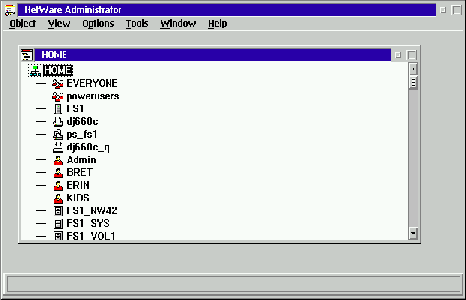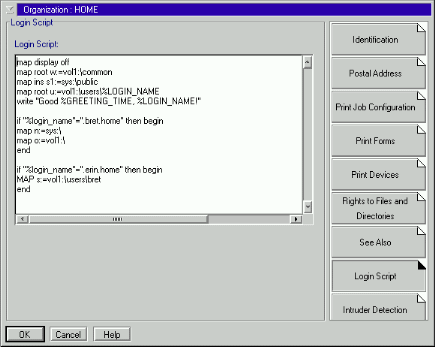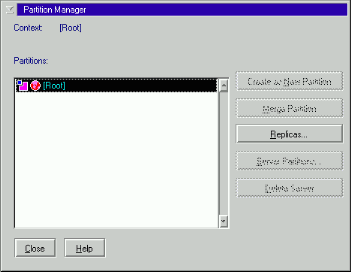
16 December 2000
 R.
Bret Walker is a Certified NetWare Engineer who resides with his wife and two
children in the South Jersey / Philadelphia Metro area. He first became exposed
to OS/2 in 1995, when Sony in northern New Jersey was looking for "an expert
in NetWare who knows anything at all about OS/2." Although he ultimately turned
down the job, he has since become an OS/2 junkie. A huge fan of the cinematic arts,
in his spare time he writes reviews for and maintains The
People's Reviews.
R.
Bret Walker is a Certified NetWare Engineer who resides with his wife and two
children in the South Jersey / Philadelphia Metro area. He first became exposed
to OS/2 in 1995, when Sony in northern New Jersey was looking for "an expert
in NetWare who knows anything at all about OS/2." Although he ultimately turned
down the job, he has since become an OS/2 junkie. A huge fan of the cinematic arts,
in his spare time he writes reviews for and maintains The
People's Reviews.If you have a comment about the content
of this article, please feel free to vent in the OS/2
eZine discussion forums.
|
Previous
Article |
|
Next Article |
OS/2 Network Administration, Part
2: Netware 4 turns its back
Last month we talked
about OS/2 support in the NetWare 3.x environment. We discussed the strides Novell
had made in ensuring that both connectivity and administration support was available
for OS/2. At the time that NetWare 3.x was first authored, DOS was the dominant
desktop environment, and OS/2 was still viewed as the 32-bit operating system of
the future. Indeed, Novell was banking on the success of OS/2 in the marketplace.
This is not to say that Novell envisioned
a network operating system based solely on DOS and OS/2 systems. They also provided
for connectivity with Unix and Macintosh systems. What they were envisioning was
the progression of the network environment which would encompass all desktop environments.
When NetWare 4.0 and 4.01 were released,
they still felt the same way about OS/2 as the 32-bit front runner, but they also
included a lot more tools for the Windows (3.x) environment than they had before.
The DOS client also included Windows tools which emulated the NetWare Tools available
in OS/2 (not the other way around). But there was a problem with NetWare 4. The
NetWare Name System (NNS), an extension of the Bindery from 3.x, was only an extension
to an already bulky and cumbersome database. NetWare 4.1 was soon after released,
which utilized the new environment called NetWare Directory Service, or NDS. NDS
is based on the x.500 standard naming convention, and is a tree-based and highly-scaleable
network environment.
But NDS wasn't the only innovation
that year. Microsoft also released its own popular 32-bit operating system, Windows
95. NetWare began to slacken its support of OS/2 as an administration tool and swing
its support toward the dark side. When NetWare 4.11 was released, the administration
tools for NDS were entirely Windows based. The central network administration tool,
NWAdmin, found in both 16- and 32-bit Windows versions, will not run in a Win/OS2
session because the user must be logged into NDS in order to use it. The problem
is, while OS/2 will log into NDS and access the NDS tree directly, Win/OS2 and DOS/OS2
will not. The DOS requester included with the OS/2 client utilizes the NETX environment,
while NDS requires the use of the VLM (Virtual Loadable Module) based requester.
So why the cold shoulder? Well, the
answer lies in the numbers. Even the most die-hard of OS/2 users could see that
Windows 9x and NT were fast becoming the dominant desktop operating systems. Novell
saw it, too. So they swung their support behind the front-runner.
So here was the OS/2 community, lamenting
the fact that we now had to have at least one Windows-based system on the LAN to
truly administer it, and Novell was saying to us, "Oh, well." What could
we possibly do?
Client utilities
Well, to be fair, Novell hadn't (and
still hasn't) completely given up on OS/2. As a client operating system, it's unparalleled.
There are still client utilities (including the OS/2 NetWare tools, which do little
more than allow you to map drives and capture printer queues through a PM utility).
In the SYS:PUBLIC\OS2 directory are the following command-line utilities for OS/2
and their functions:
CAPTURE: Utility for capturing
print queues to local ports.
CX: Change context. You use
this to "walk the tree," as it were.
FLAG: Utility to flag files
with NetWare attributes, akin to ATTRIB.
LOGIN/LOGOUT: Fairly self-explanatory.
Also exists in the SYS:LOGIN\OS2 directory.
MAP: For mapping network volumes
and directories to local drive letters.
NCOPY: A 32-bit file copy
command that maintains file attributes. It's also faster than plain COPY.
NDIR: A very useful NetWare
version of DIR, which lists file attributes and ownership of files.
NLIST: A utility which lists
NetWare related info, such as currently logged in users, currently attached servers,
etc.
NPRINTER: PM-based utility
for allowing a local printer to service a network queue. It's the next generation
of RPRINTER (Remote PRINTER) from the 3.x days.
PURGE: Utility for removing
deleted files. Like Windows 9x and NT, NetWare stores deleted files so they can
be salvaged in case they were accidentally deleted. Actually, Microsoft took their
idea for the Recycle Bin from this functionality in NetWare.
SEND: Used for sending point-to-point
or broadcast messages through the network.
SYSTIME: Used to display the
server's time, and to synchronize the workstation with this time. LOGIN also synchronizes
the workstation's time with the server.
WHOAMI: Just like it says,
Who Am I? It returns the user's login name. It's actually pretty useful for administrators
who log in as different users to figure out who they are logged in as.
These are only some of the client
utilities in SYS:PUBLIC\OS2, but these are the most useful.
But I'm an administrator! What now?
Well, you have two options. You can
go seek out a Windows-based PC and do your administration from there. I'm not all
about that, so I choose option two: download and install the NetWare tools for OS/2.
There are two primary utilities for
administering an NDS-based network (NetWare 4.1 and higher). These are NWAdmin (or
NETADMIN, the DOS counterpart) and NDS Manager. NWAdmin is a Windows-based utility
for manipulating NDS containers and leaf objects, such as print services, users,
volumes, servers, etc. NDS Manager, on the other hand, is used for manipulating
NDS partitions and partition replicas. Without going into great detail about what
partitioning is to NDS, just know that NDS is a database, and servers which are
to be used for authentication have to have a copy of this database, or a
replica. Partitioning creates smaller pieces of the database that can be
maintained locally in a WAN environment, to keep the amount of WAN traffic to a
minimum. NDS Manager gives the administrator control over how the NDS database is
partitioned, and which servers hold partition replicas. For more on NDS concepts,
see Novell's Online Documentation for NDS 8 (Link: http://www.novell.com/documentation/lg/nds8/docui/index.html).
While NetWare 4.11 does not have
these tools readily available for OS/2, they have been made available in a NetWare
tools download. To get the NetWare tools, hit the Hobbes OS/2 site (http://hobbes.nmsu.edu)
and either search for "NetWare" or dig down to pub/os2/util/network/netware.
There you will find a file called nw411os2.zip. Once you've downloaded this file,
you'll want to unzip it to your SYS:\PUBLIC\OS2 directory on your NetWare 4.11 file
server.
What you'll add to your OS2 directory
is a PM-based NWADMIN utility, which is as functional as it's Windows counterpart,
but much much faster. Also, while NDS Manager is absent from these tools, the PM
NWADMIN includes something called Partition Manager in the Tools menu. Partition
Manager does the same job as NDS Manager, but without the DSRepair tools. This is
not a major drawback, since most NetWare administrators and engineers (including
me) run DSRepair from the server console anyway.

Fig 1: The NW Admin Utility

Fig 2: The Object Properties for the Home Container

Fig 3: The Partition Manager screen
Also included in this package is
the OS/2 PM-based REMOCON which, if you remember from the last article, comes from
the 3.x days and was dropped in the 4.x releases. If you don't have access to a
3.x server, you're still safe as long as you download the NetWare tools package.
Also, these tools work for NetWare 5 network administration.
NetWare and OS/2: still perfect together
So based on all this, which is my
administration platform of choice in a NetWare environment? Why, OS/2 of course.
The utilities run much faster and crash less (if at all - after years of using the
utilities on OS/2, I have never seen them crash or lock) than the Windows-based
utilities. Of course, that's no surprise. But what is surprising is the direction
that Novell seems to be taking away from OS/2 as a network platform.
However, next month, we'll take a
look at Novell's journey into the world of Java, and what that means for the OS/2
community and the NetWare administrator.
Next month: NetWare 5 reinvents
itself
|
Previous
Article |
|
Next Article |